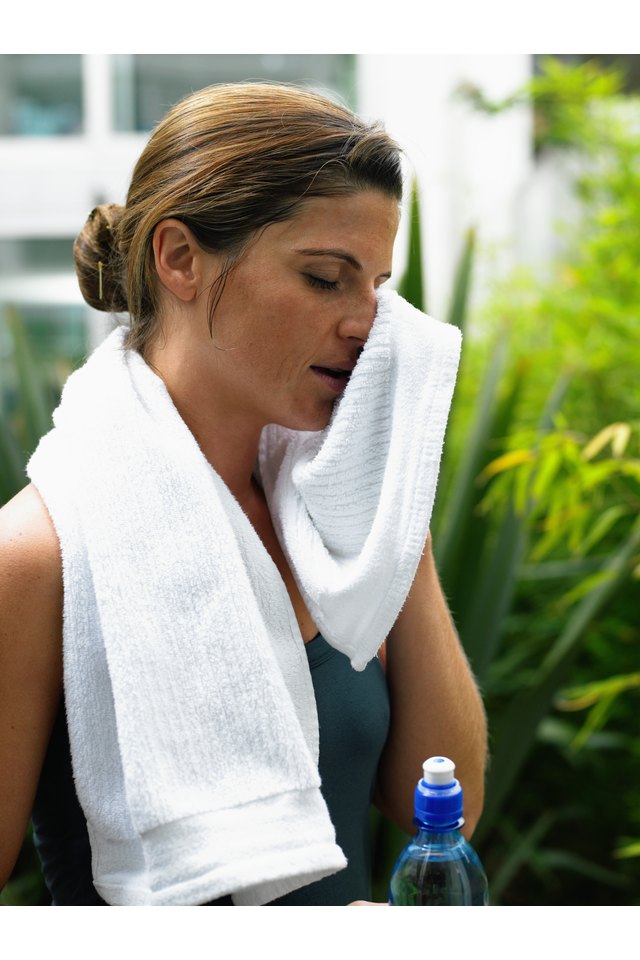How Does Evaporating Sweat Cool You Down?

Exercising increases your body temperature. When your hypothalamus -- an area of your brain that acts as a thermostat -- senses either a rise or fall in body temperature, it takes action to protect your body. With increases in core body temperature, your hypothalamus directs more of your blood flow to the skin and signals the body to start sweating. Sweating is the primary means of cooling the body in warm environments.
Evaporation
In order for sweat to cool your body temperature, the water must evaporate. If it drips off or if you wipe it off with a towel, you won’t benefit from the cooling mechanism of evaporation. Beads of sweat on your skin are in liquid form. When the water temperature rises, the molecules become more active and gain energy. When a molecule gains enough energy, it can break free from the bonds that hold the liquid together and transform into water vapor. This is evaporation. As the molecule evaporates, its energy -- or heat -- is removed from the sweat that remains on your body. This loss of energy cools the surface of your skin.
Temperature
Your body has several other means of controlling body temperature: convection, conduction and radiation. When you are exercising in a warm environment, there is not enough of a difference between the temperature of your body and the temperature of its surroundings for these other three methods of temperature reduction to work effectively. Your body must rely almost exclusively on perspiration. This is one reason why it is particularly important to drink more fluids when exercising in the heat. You must replace the water lost through the increased amount of sweat your body produces.
Humidity
Increased humidity levels decrease the body’s ability to cool itself through sweating. If the air already contains large amounts of water vapor, your sweat will not evaporate as readily, and your body temperature will not drop as quickly. When considering humidity, you must take into account the immediate environment surrounding your body. Even if you live in a dry climate, wearing clothes that do not allow moisture to evaporate -- such as cotton -- will make it difficult for the sweat to evaporate from your skin. Exercising in contained humid environments -- such as hot yoga studios -- also makes it difficult for sweat to evaporate.
Training
When you train regularly, your body’s ability to control its temperature improves. Your body will start sweating earlier, in anticipation of the rise in body temperature. Also, your body will increase its sweat-producing capabilities by enlarging your sweat glands.
References
- How Everyday Things Work: 60 Descriptions and Activities; Peter Goodwin
- Sport Nutrition; Asker Jeukendrup and Michael Gleeson
- Exercise Physiology: Nutrition, Energy, and Human Performance; William D. McArdle, et al.
- American Council on Exercise: What’s the Best Way to Get Acclimated to Hot Yoga Classes?
Writer Bio
Kat Black is a professional writer currently completing her doctorate in musicology/ She has won several prestigious awards for her research, and has had extensive training in classical music and dance.
